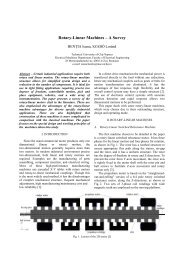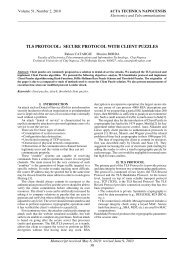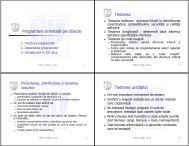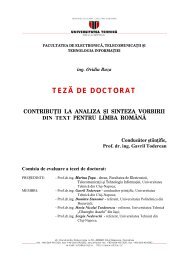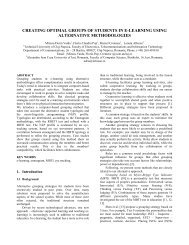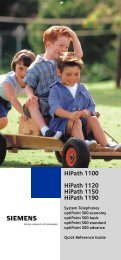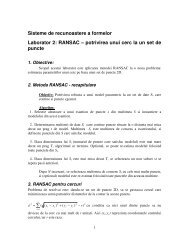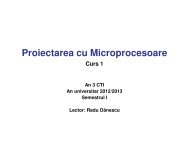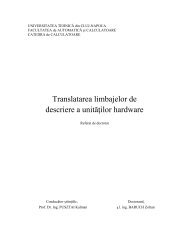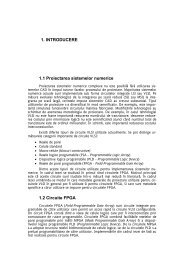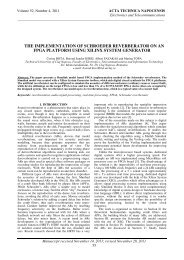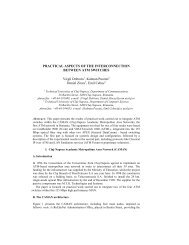LTE Emulator
LTE Emulator
LTE Emulator
Create successful ePaper yourself
Turn your PDF publications into a flip-book with our unique Google optimized e-Paper software.
TUCN – Data Transmission Laboratory<br />
indicating that their position is closer to the center of the cell (base-station) than the one<br />
of the main user; additional details are to be found in chapter 5. , which describes the<br />
operating principle of the simulator.<br />
o the class and priority of the service offered to the user – an unlimited number of<br />
services may be defined, the services with smaller indexes having higher priorities. The<br />
Winner project [Win05_2] defined 21 classes of services and 24 generic applications.<br />
Those definitions are a basis for the definition of a set of possible services. The priority<br />
and bit rate assigned to each service are employed in the process that allocates the radio<br />
resources to each user, as shown in paragraph 5.2.1. that describes the scheduler block;<br />
o the average bit rate associated to the service provided to the user.<br />
Figure 4.2. displays the simulator interface employed for the setting of the user parameters;<br />
the example shown considers 5 users on the cell carrier.<br />
4.3. Parameters that define the modulation and FEC coding techniques and<br />
the OFDM access method in the simulator<br />
Because the modulation and FEC encoding methods employed on the OFDM sub-carriers<br />
and the data structures employed in transmission are strongly correlated, their parameters are<br />
defined in the same window.<br />
16<br />
Fig. 4.2. Setting the users’ parameters in the simulator interface.<br />
4.3.1. Parameters of the adaptive modulations employed on OFDM sub-carriers<br />
Each OFDM sub-carrier is modulated with a square QAM or a 2-PSK constellation defined<br />
by the number of bits/symbol. The accepted numbers of bits/symbol are 1, 2, 4, and 6 and<br />
optionally 8, i.e. the signal constellations employed are respectively 2PSK, QPSK, 16QAM,<br />
64QAM and optionally 256QAM.<br />
The above mentioned modulations are employed on groups of sub-carriers (OFDM chunks –<br />
see chapter 2.). The adaptive employment of these modulations require the setting of some SNR<br />
domains, within which each modulation should be employed according to a given criterion (biterror<br />
rate or symbol-error rate), these SNR domains being separated by SNR thresholds. The<br />
simulator interface allows the setting of the SNR thresholds, but the numbers of bits/symbol can<br />
not be modified, since only the modulations mentioned above can be employed. Actually, the<br />
interface allows the modification of their values, e.g. to odd values, but the modification has no<br />
effect, since the numbers of bits/symbol are imposed to be either even or 1. The interface<br />
window that allows the setting of the SNR domains for each modulation is presented in the lefthand<br />
side of figure 4.3. The 256-QAM constellation can be validated in the corresponding<br />
check-box.<br />
4.3.2. Parameters of the error-correcting codes employed<br />
The simulator employs LDPC FEC codes, see [Gal03] [Mck99], and more specific it<br />
employs regular L(2,q)-LDPC codes, as defined in [Ele02] and [ITU]. These codes are<br />
characterized by three parameters K, J and P, P being a prime number, K, J ≥ 3 and J < K ≤ P.<br />
The codeword length equals K·P and the number of check bits is given by the product J·P.



